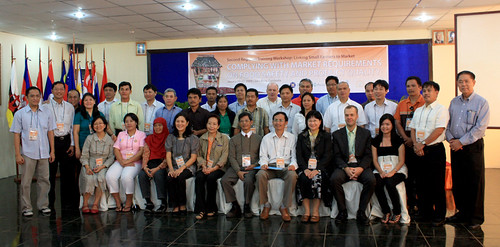Summary of Proceedings
BRIEF BACKGROUND ON LSFM
Linking Small Farmers to Market (LSFM) establishes pilot models of communities of small farmers that are able to compete in the market and set a higher price for their produce as a result of their ability to comply with industry standards of product safety and quality. LSFM entails providing these communities with the necessary technical support and a favorable policy environment that will give them the leverage to link with markets on the strength of their products’ quality and standards.
LSFM is implemented by AsiaDHRRA in partnership with the Center for Study for the Development of Agriculture in Cambodia (CEDAC), the Philippine Partnership for the Development of Human Resources in Rural Areas (PhilDHRRA), the Viet Nam Farmers Union (VNFU), and Bina Desa/InDHRRA to implement the project in four pilot countries, namely: Cambodia, Philippines, Vietnam, and Indonesia.
WORKSHOP OBJECTIVES, DESIGN, METHODOLOGIES AND OUTPUTS
The training workshop is second in a series of three programmatic workshops at the regional level. In addition, there will be at least five training workshops for each pilot country that will be tailor-fit to suit heir respective settings and needs.
The Second LSFM Regional Training Workshop is focused on the distinct themes of food safety and product quality, to address the general wariness of markets to link with small farmers because of the fear and perception that small farmers are unable to produce safe and high-quality products. LSFM implementers have raised the need to build capacities in this field because they have selected commodities that are part of food groups called agricultural products.
The workshop aims to enable the participants to:
- Identify specific food safety and product quality issues for their products, namely, tea for Vietnam, calamansi for the Philippines, and free-range native chicken for Cambodia.
- Explain the rationale behind product quality, most especially safety standards set by international inter-government bodies and national governments;
- Articulate the importance of certification, guarantees, etc. as mechanisms to secure food safety and product quality;
- Present practical steps that would address food safety and product quality issues in their own specific organizations and communities;
- Identify specific needs that require support from government and other stakeholders to improve the safety and quality of the above-mentioned commodities.
The workshop consists of five input sessions and one-day field visit, with sufficient time for plenary and open forum in-between presentations. The sessions were based on broad themes that open rooms for specific country-situations and settings. The workshop relied heavily on experience-based insights and learnings, and concrete situations on the ground.
The workshop output included:
- The identification of food safety and product quality issues and challenges confronting small farmers and producers;
- The identification of specific needs that required support from government and other stakeholders to improve safety and quality of the products; and
- Strengthened solidarity and constituency.
WORKSHOP PARTICIPANTS
The participants consisted of LSFM implementers from Indonesia (Bina Desa/ InDHRRA), Cambodia (CEDAC), Vietnam (VNFU) and the Philippines (PhilDHRRA). AsiaDHRRA members from Thailand (SorKorPor), Taiwan (TaiwanDHRRA), Vietnam (VietDHRRA), and Myanmar (MyanDHRRA) also attended. Also present were resource persons and guests from FAORAP, CEDAC, XAES, and LSFM’s TWG members from PDAP and UMF. A big number of participants from farmers’ organizations in Cambodia (KAWP and FNN), Vietnam (VNFU), Philippines (PAKISAMA and ZASIHIVAC), and the Asian region (AFA) also came. The opening ceremony was graced by officials from Apsara Authority as the host city of the training workshop.
SESSION PRESENTATIONS
Session One on Food Safety and Product Quality issues and Problems consisted of country presentations from the four LSFM project implementers, Following issues and problems were identified:
- Philippines – (1) Some farmers do not comply with guidelines for picking of calamansi; (2) Excess water and fungi cause branches to dry; (3) Monitoring by an accredited agriculturist is needed; (4) Sorting must be monitored; and (5) Some farmers tended to go back to old farming practices.
- Cambodia – (1) Lack of chicken feeds during the dry season; (2) Markets are too far, products difficult to transport; (3) Practices by traders affect the credibility of dressed chicken in terms of safety and quality.
- Vietnam – (1) Limited farmers’ access to knowledge and information about food safety and product quality; (2) Poor processing techniques and equipments; (3) Limited quality management and limited access to product quality certificates; and (4) difficulties in trade market development.
- Indonesia – (1) Manual drying of seeds especially during wet season affect grain quality; (2) Lack of storage facilities; (3) Need to have more information on the practices in food safety and product quality in other countries.
Session Two on The Importance of Standardization of Product Safety and Quality, was discussed by Dr. Wen-chi Huang, Execom member of the AsiaDHRRA and its Chairperson for LSFM Project Advisory Committee. She discussed about the nature and definition of product (food) quality, standardization processes, and the importance of certification and cited specific cases of agricultural food product traceability in Taiwan as concrete examples.
Session Three on Food Safety: Issues on Food borne Diseases/Illnesses, Toxicity and Impact of GM Food was presented by Mr. Winfried Scheewe of the German Development Service who also serves as Marketing Adviser for CEDAC. He discussed about food-borne illnesses in terms of definition, effect and impact, transmittal, and origination, causes and symptoms. He proceeded to discussing the hidden threats of GM food and explained the reasons why he is advocating for the banning of GM products in the food industry.
Session Four on Food Safety Standards—CODEX Alimentarius: A Briefing on the International Food Safety Body and its Dynamics, presented by Mr. Peter Sousa Hejskov, Food Quality and Safety Officer of the FAO Regional Office in Asia Pacific, dealt with the importance of food safety and standards and discussed CODEX Alimentarius Commission in terms of its objectives, strategic goals, and strategic plan, organizational chart, and achievements.
Session Five on Mechanisms for Product Quality and Food Safety, consisted of case presentations from members of the TWG. Mr. Rene Guarin, Executive Director of UMF, presented tips for entry into supermarkets which highlighted the issue of viability and scale in complying with the high standards of food safety and product quality observed by the supermarkets. Mr. Jerry Pacturan. Chairperson of OCCP, discussed certification systems and the levels of food safety and quality control systems and the different types of community-focused guarantee systems, its features, external controls, and risk assessment.
PLENARY DISCUSSIONS
On the factors and causes that make it difficult for farmers to comply with standards for food safety and product quality: The pressure to feed the world’s growing population is compounded by environmental destruction and climate change. Governments and producers use this kind of situation to justify the use of GMO, pesticides, and fertilizers as means to maximize soil potential. However, the problem of hunger is more due to unequal distribution of food and resources than low productivity. Farmers have also been made to believe that the use of pesticides and fertilizers is the surest way to ensure income from farming. However, more and more of them are now learning that these technologies are actually more expensive in the long term because it makes them dependent on manufacturers more and more. The competition presented by commercially-produced agricultural goods also discourages farmers to fully shift to sustainable agriculture. But enlightened consumers who have learned about the harsh impacts of GMO and chemicals on their health have become more willing to pay more for products that have assured high standards of food safety and product quality. What the farmers are doing to protect the welfare of consumers must be actively conveyed to the public.
On actual experiences of small farmers in enforcing and observing practices to ensure food safety and product quality standards: In the Philippines, it was observed that farmers are (expectedly) culturally unable to adopt fast to new farming methods. Not giving up on the demands of discipline worked, eventually. Democratic and participatory practices also helped significantly in the adoption of sustainable farming practices. In Cambodia, internal mechanisms of enforcement, such as farmer-to-farmer monitoring, are practiced. In Taiwan, getting help from professional monitors and technicians was necessary. Finally, it is important to make the distinction between food safety and product quality. The two are not one and the same / cannot be mixed although they go together. Farmers’ practices to ensure food safety do not necessarily assure product quality as there are post-harvest/production process that occur beyond the control of small farmers (e.g. handling, transport, processing, storing, packaging.)
On the ability of small farmers to access and acquire certification. Certification is not advisable for low levels of production-- it will cost the farmers and the producers too much. Especially for organic rice, huge volumes help to greatly reduce the cost of certification. It is always a question of volume and viability, especially for those looking forward to breaking into the supermarkets. It would help for the small farmers to plan ahead and identify the kinds of certification they wish to get so that they can build their capabilities accordingly, instead of having to re-tool once they realize the type of certification that their chosen markets would require of their products. Small farmers can also develop their own standards for food safety and product quality by using CODEX Alimentarius as reference for the minimum standards, and/or adopting and modifying other existing standards to suit their own particular requirements.
On standard certification vis-à-vis government requirements and the demands of markets. While it is important for governments and markets to have standards that are workable, it will also help if farmers and producers see that protecting their own products redounds, in the end, to their own benefit and self-interest. It is not only a matter of compliance with government requirements, but more about doing what is beneficial for one’s own good. It is not merely about getting a seal of certification, but more about building a good reputation to make one’s produce more competitive in the market. It’s because, in the absence of national standards, market requirements will be the main deciding factor especially since standards set by private companies are basically decided by the market requirements. No one group or mechanism monitors or regulates them.
On enforcing standards of food safety and product quality. It is important to distinguish between laws and standards. Standards are not laws, and one does not have to have a national law in order to observe and practice standards in food safety and product quality. Certification, in some cases, is largely a voluntary policy and need not be mandatory. It is part of one’s being competitive in the market and is therefore really beyond legislation and/or government certification.
On the access of small farmers to CODEX Commission. CODEX allows for different levels of participation and it is very much up to the CODEX contact persons to invite the relevant players. While there is the perception that CODEX is dominated by big business interests in the food service industry, it is really up to the countries to make use of CODEX mechanisms and to involve small scale farmers and cooperatives.
FIELD VISIT
The workshop participants were divided into two groups for the field visit. They spent from 7 am to 3 pm of Day Three (Thursday, January 22) visiting the farms and interacting with farming communities.
The first group visited Teuk Vil station, a research, demonstration, training and exchange visit station of target farmers and target groups from other NGOs. They also visited farming communities in Angkor Thom district where they interacted with farmers practicing composting and sustainable agriculture, and where they met with the finance officer of the village’s saving cooperative.
The second group visited organic farm in Ba Kong, a nearby public market, and one of CEDAC’s distribution center for organic rice. They realized, among other things, that price premium for organic product cannot be enjoyed by farmers without the presence of effective intermediation mechanism that will develop the link between them and the appropriate market, and that consumer awareness is necessary to build the market for organic product.
CONCLUSION AND CLOSING
Ms. Ramirez expressed sincere appreciation of the solidarity and support provided by the members of LSFM TWG, namely, Mr. Guarin and Mr. Pacturan, and of Mr. Scheewe and Mr. Hoejskov for graciously serving as this workshop’s resource persons. She also extended deepest gratitude to CEDAC who has been this workshop’s generous host, Gifts and tokens were given to them by Dr. Huang in behalf of AsiaDHRRA.
Mr. Hoejskov who was asked to share a parting message opined that country plans can be made more realistic and less ambitious in wanting to do everything. Ms. Sudaporn Sittisathapornkul, Chairperson of Asian Farmers’ Alliance, gave the closing remarks and thanked AsiaDHRRA for consistently remaining as AFA’s big supporter.
Ms. Ramirez, affirmed that AsiaDHRRA will start with what are already in the field, especially in the pilot countries. AsiaDHRRA will continue to link experiences and match needs with expertise. Ms. Ramirez added that AsiaDHRRA is in the process of mobilizing potential projects as they are committed to do follow-up work on LSFM. She hopes that all these efforts at the regional level will continue to cascade at the country levels. In the end, it will be up to the countries to be consistent and persistent with following up plans and activities.
She thanked the members of the AsiaDHRRA Secretariat and drew the workshop to a close.
Download the ppt Overview of the LSFM and its link to ASEAN...
Download the ppt Synthesis and Summary... Read More...


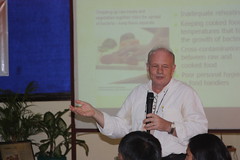
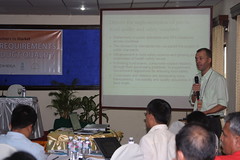
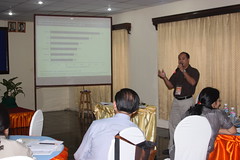
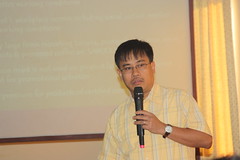
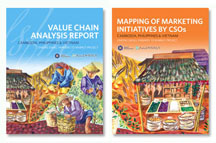 The LSFM Program is pleased to announce the publication (print and digital) of the following books:
The LSFM Program is pleased to announce the publication (print and digital) of the following books: